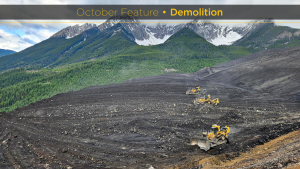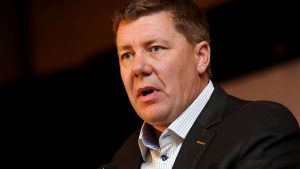SASKATOON, SASK — In July of this year, mining giant BHP announced a company first.
More than 14,000 kilometres away from its Melbourne, Australia headquarters, BHP said it had achieved its “gender balance” target for its local workforce in Saskatchewan.
With women making up more than 43 per cent of the company’s workforce at its Jansen potash mine project as well as its Saskatoon corporate office, the province became the first BHP location in the world to reach a goal set back in 2016.
That was when the Australian multinational announced its aim to achieve gender balance — defined by the company as a minimum of 40 per cent women and 40 per cent men — across its global workforce by the end of 2025.
BHP had good reason to hail its Saskatchewan achievement, which was no small feat in an industry where the typical worker has long been a burly hard-hatted man. As recently as 2019 in Canada, federal government statistics showed just 14 per cent of this country’s mining sector workforce were women.
Mining is so male-dominated that the rare female employee often arrives at their new job to find they can’t even find coveralls that fit them, said Charlie Elke, a 28-year-old woman who works at the Jansen project as superintendent of camp and logistics.
“Lots of times these were just previously offered in men’s sizing,” Elke said, adding the fact that BHP offers smaller sizes of uniforms is one of the factors that has made her feel welcome as a woman in mining.
A growing emphasis on ESG (environmental, social and governance) investing, as well as changing societal norms, means many companies today are looking to make their workplaces more inclusive.
But BHP had a unique opportunity in Saskatchewan to build a modern mining workforce because it was building it from the ground up. The Jansen potash mine, whose first phase will be operational in 2026, is a brand new mine.
Potash is a critical mineral used in fertilizer production and is in demand around the world. When complete, Jansen will be one of the largest potash mines in the world.
Caroline Cox, the company’s chief legal, governance and external affairs officer, said using this project to help correct the mining industry’s historic gender imbalance was a “business imperative” for BHP.
The company’s own data already demonstrated that its sites with a higher proportion of female employees tended to perform better in terms of safety, workplace culture and morale and overall production.
In addition, the company knew it had to cast its recruitment net wider to have a shot at fully staffing its Jansen project, which is expected to create up to 600 full-time jobs once operational.
According to a recent Deloitte report, Saskatchewan is facing a significant labour shortage, with the number of vacant jobs in the province’s mining, oil and gas industry increasing by 132 per cent since the start of 2019.
The report also found that while one in five mining employers in Saskatchewan say labour shortages are a key obstacle to their business operations, only 11 per cent of Canadians aged 15 to 30 say they would probably or definitely work in the mining industry.
Cox said one of the challenges BHP faces is access to talent and competition for workers is high.
“We recognized a while ago that we were probably being pretty narrow in how we were recruiting, so we shifted that around. And we’re very deliberate about looking for talent outside of the industry,” she said.
To build a more inclusive workforce, BHP has implemented things at Jansen like all-female dorms for the women on its construction crew and companywide campaigns around gender and workplace respect.
In addition, managers at BHP are required to identify any gender-based pay gaps on their teams and take steps to rectify them, Cox said.
The company also offers a trades readiness program, to provide women with the basic skills they need to become heavy-duty equipment technicians, industrial mechanics and other typically male-dominated roles.
In addition to recruiting more women to its workforce, BHP also aims to increase Indigenous representation at its Jansen workforce from its current eight per cent to 20 per cent by the end of 2026.
Andrew Swart, managing partner for Canadian energy resources and industrials with Deloitte, said Saskatchewan is currently Canada’s top mining jurisdiction, with rich deposits of not only potash, but also uranium and a variety of critical minerals.
But he said with a shortfall of thousands of workers expected in the sector in the years to come, companies will not be successful unless they can figure out how to harness previously untapped labour pools.
“It’s not just a skills shortage, but you’ve also got a whole generation of baby boomers who are going to retire in the next 10 years or so,” Swart said.
Cox said BHP has more work to do, specifically around child care. Lack of access to child care remains a major impediment to women entering the workforce, especially in remote communities.
But she said the company is proud of what it has done so far, including its efforts to convey that setting diversity targets does not mean BHP is seeking to exclude men.
“I think there will always be a degree of that questioning or criticism, but I think we’re really firm about where we’re going, and we’re not going to stop because of some of those noises,” she said.
Elke said working at the Jansen potash site has helped her develop leadership skills and grow her career in ways she never thought possible.
“There’s definitely the times you think, ‘Oh man, did I just get this job because I’m female,'” she said.
“But everybody I’ve worked with on site has been super encouraging. And actually lots of the men that I work with are the first to tell me they notice my work ethic and tell me I’m going to do well.”
© 2023 The Canadian Press











Recent Comments
comments for this post are closed